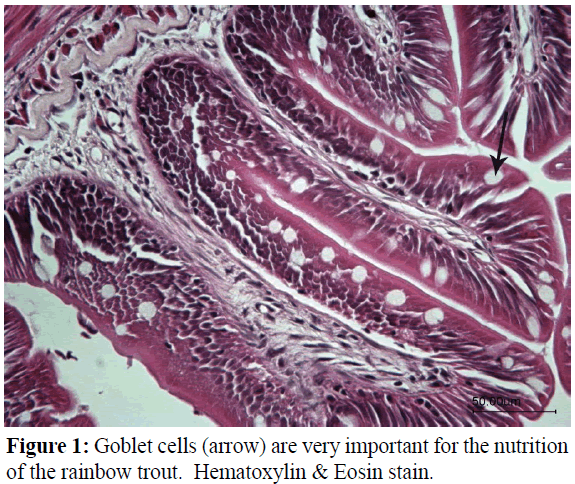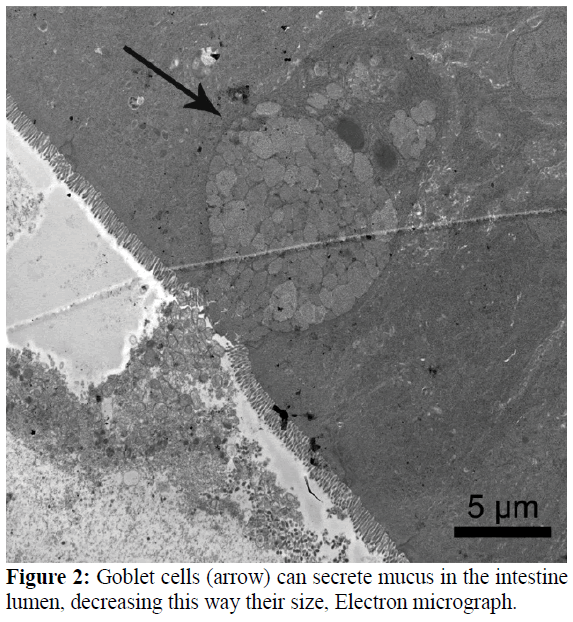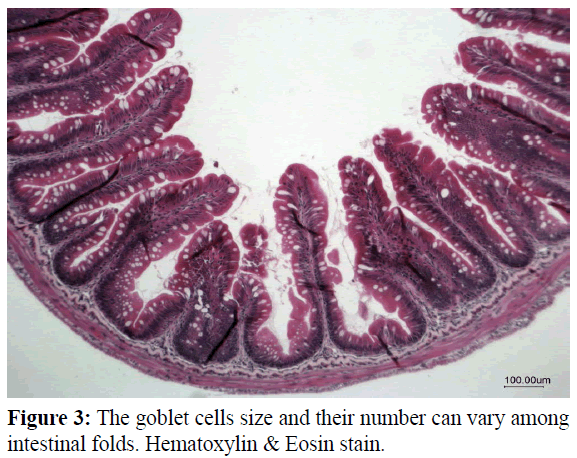Panagiotis Berillis* and Eleni Mente
Department of Ichthyology and Aquatic Environment, University of Thessaly, School of Agricultural Sciences, Fytoko street, Volos, Greece
- Corresponding Author:
- Panagiotis Berillis
Department of Ichthyology and Aquatic Environment
University of Thessaly, School of Agricultural Sciences
Fytoko street, GR-38446 N. Ionia Magnesia’s, Volos, Greece
Tel: (+30)2421093248
E-mail: pveril@apae.uth.gr
Received Date: 22.12.2017; Accepted Date: 28.12.2017; Published Date: 29.12.2017
Goblet cells are very important for the nutrition of the fish and its health. Starvation induces an increase in the number of intestinal goblet cells [1]. The mucus secreted by goblet cells lubricates undigested materials for onward progression into the rectum. The size of the goblet cells in rainbow trout intestine is decreased 6 h after feeding and gained their original size 12 h after feeding. Six hours after feeding is the peak of the protein synthesis rates in trout. Then the digestion process is on progress and goblet cells secrete their mucous by decreasing their size. Twelve hours after feeding the protein synthesis rates are decreasing and the digestion process is towards the end, thus the production of mucous by the goblet cells is not needed. Then the goblet cells have similar size as they had before feeding. This confirms that rainbow trout should be fed twice per day and the second feeding should take place at least 6 h after the first feeding (Figures 1-3) [2].

Figure 1: Goblet cells (arrow) are very important for the nutrition of the rainbow trout. Hematoxylin & Eosin stain.

Figure 2: Goblet cells (arrow) can secrete mucus in the intestine lumen, decreasing this way their size, Electron micrograph.

Figure 3: The goblet cells size and their number can vary among intestinal folds. Hematoxylin & Eosin stain.
21556
References
- Bozic, F., Srebocan, E., Kozaric, Z. (2001) Starvation induced pathobiology in the gut of carp (Cyprinus carpio L.). Berliner und Munchener Tierarztliche Wochenschrift 114: 134-138.
- Berillis, P., Martin, S.,Mente, E. (2017) Histological methods to assess the effect of diet and a single meal on the liver and intestine of rainbow trout: fishmeal and fishoil replacement with plant protein and oil. In: Berillis P. (editor). Trends in Fisheries and Aquatic Animal Health. Bentham Science publishers.









